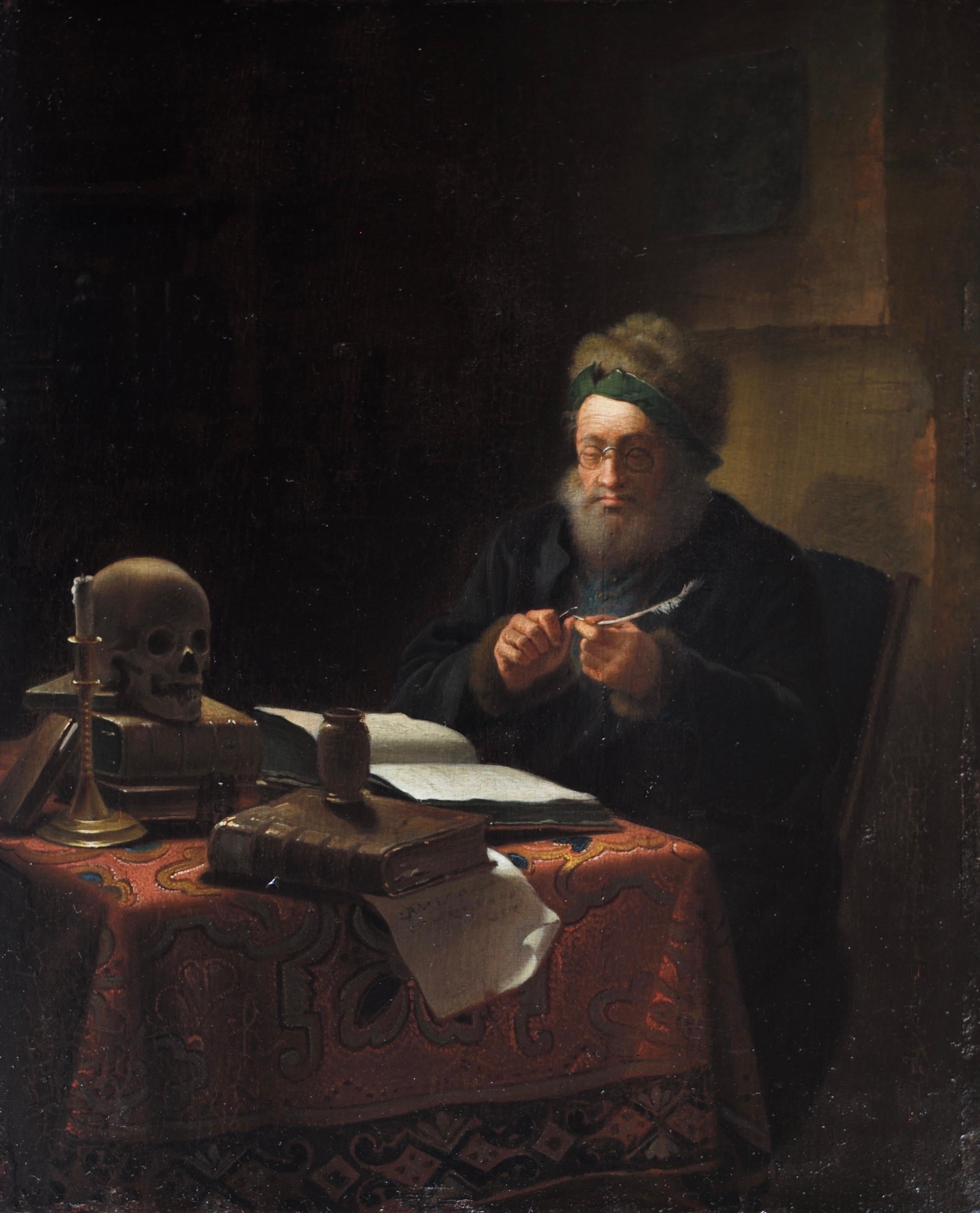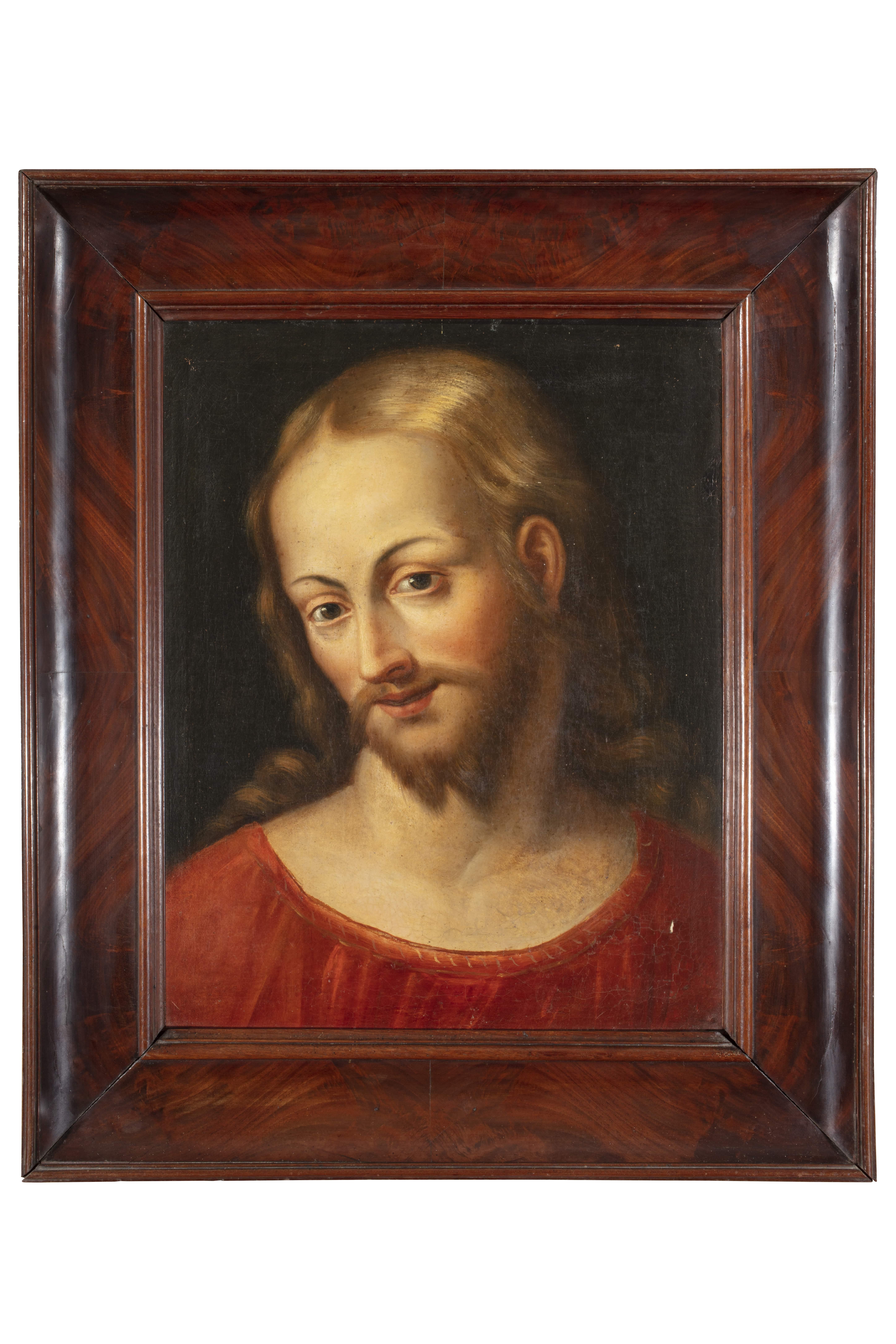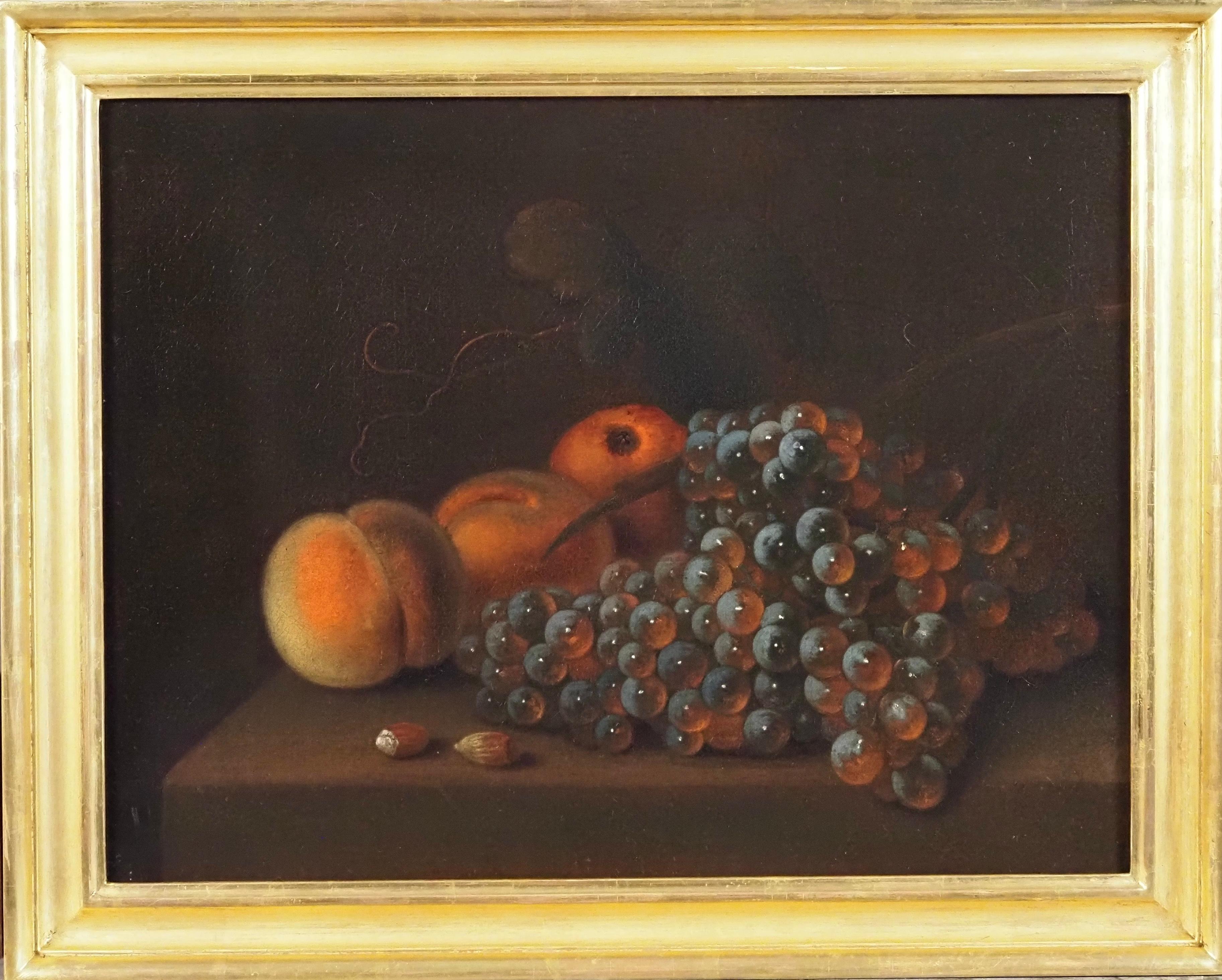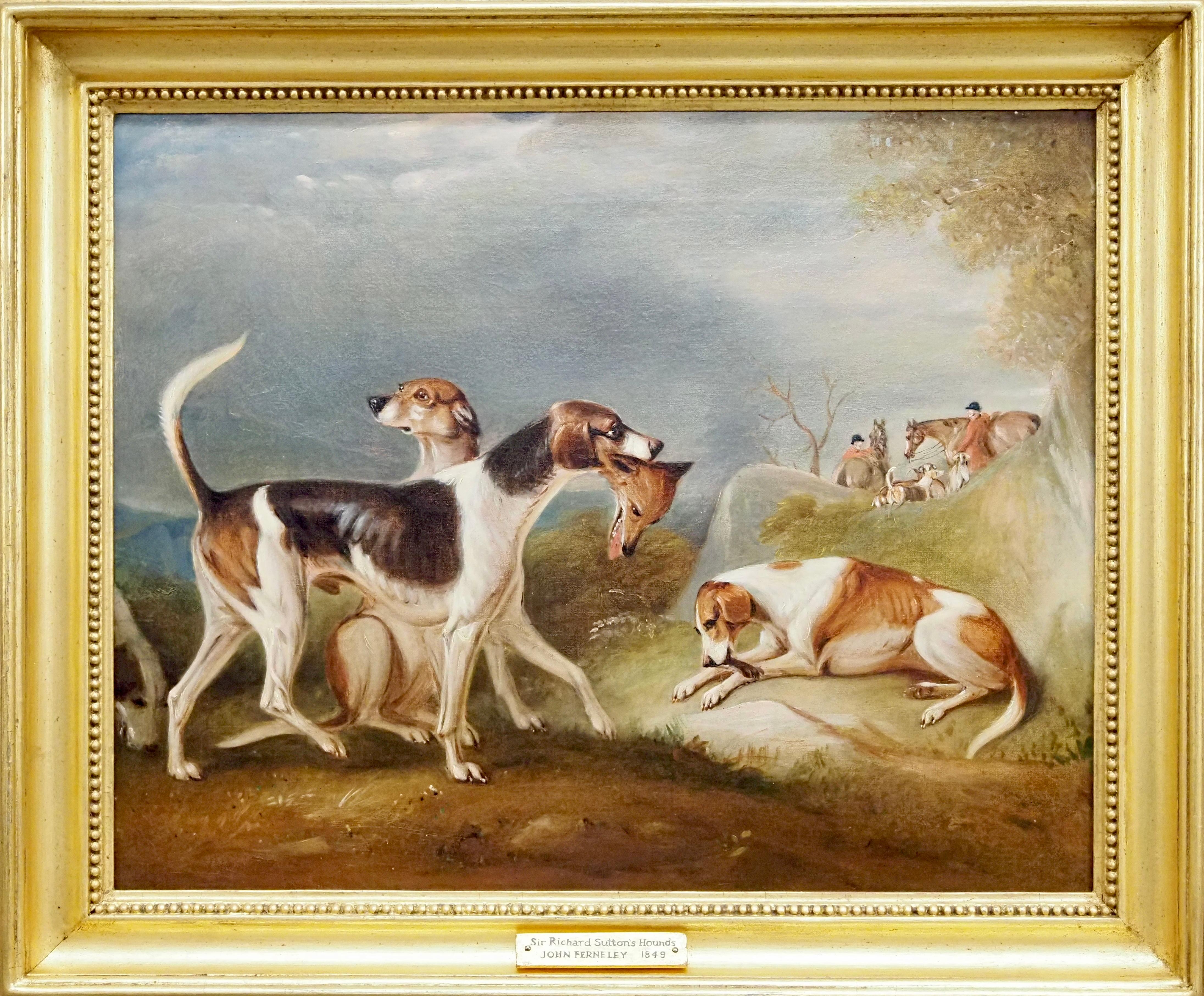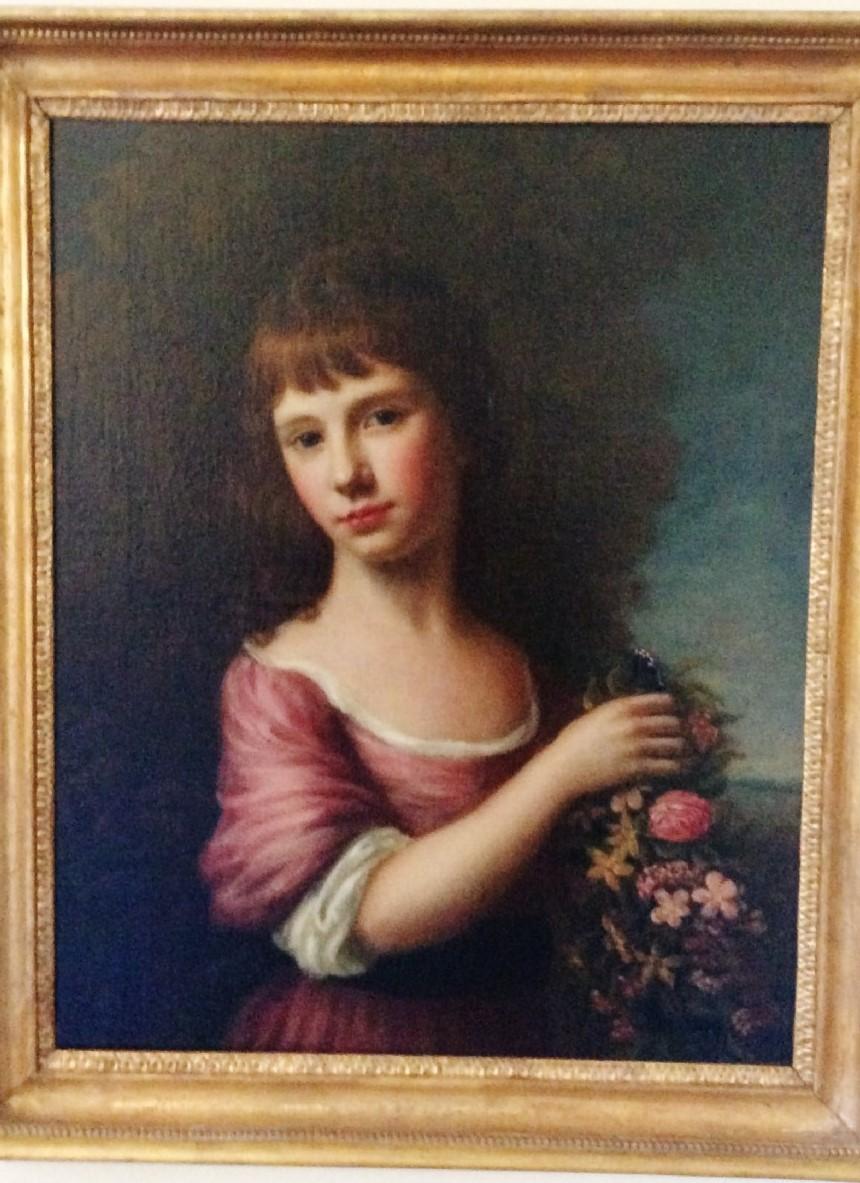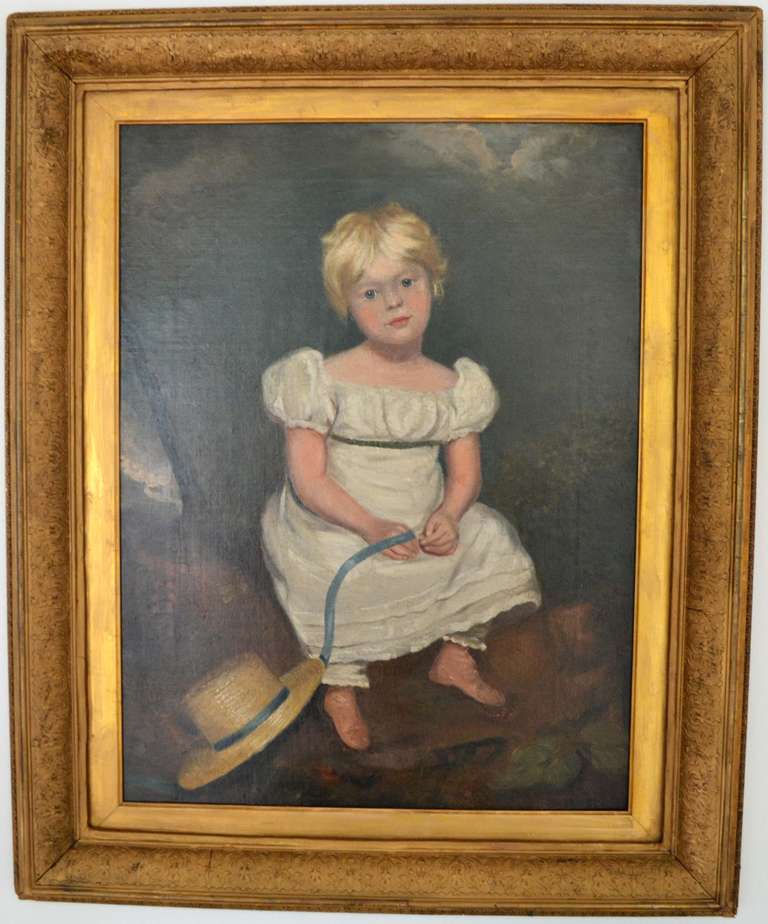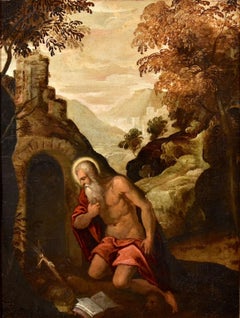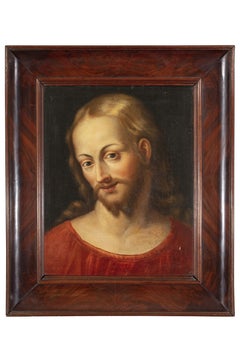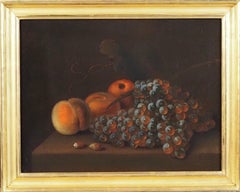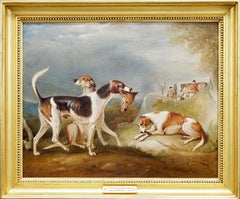Items Similar to Saint Jerome De Somer Paint Oil on canvas 17th Century Old master Flemish Art
Want more images or videos?
Request additional images or videos from the seller
1 of 22
Saint Jerome De Somer Paint Oil on canvas 17th Century Old master Flemish Art1620-1650
1620-1650
About the Item
Hendrick de Somer, known as Enrico Fiammingo
(Lokeren 1602 - Naples 1655)
Saint Jerome penitent in the cave
oil on canvas
103 x 130 cm. - In original period frame 123 x 152 cm.
This superb Saint Jerome, among the most popular and recurring figures in seventeenth-century pictorial works, is a work of extraordinary visual impact, showing the Christian monk portrayed in the guise of a hermit kneeling in the act of praying in the dim light of a cave.
The painting is undoubtedly indebted to the Neapolitan models of the early seventeenth century, and in particular the stylistic features highlight the reflections of Jusepe de Ribera (1591-1652), evident both in the choice of the subject and in the dramatic expressiveness of the elderly body.
Compared to the great master, however, the canvas presents a softer pictorial approach compared to the dark and naturalistic tensions typical of his art, turning towards a neo-Venetian style of painting based on the expressive strength of colour. These considerations, combined with the descriptive attention to the face, suggest the attribution to Hendrick van Somer (1607 - 1656).
The numerous paintings of certain authenticity present in private collections and in important public collections are a fundamental comparative term with this beautiful and sentimentally intense canvas.
Among his known works there are three versions of Saint Jerome in the Desert, one in the Trafalgar Galleries in London from 1651, the other the superb Saint Jerome in the National Gallery of Palazzo Barberini in Rome signed and dated 1652, and also that of the Spada Gallery also in Rome.
Our work shows Somer's complex language, with the Riberesque roots evident in the choice of the subject and the dramatic expressiveness of the old arm clearly highlighted.
The Saint, with his slender body, all tense tendons and rigid bones, is placed in contrast with the large red drapery of the mantle that envelops him, alluding to his cardinal's dignity. The open book is his canonical iconographic attribute, referring to Jerome's fruitful activity as a scholar, biblical scholar and theologian, which made him the forerunner of the Renaissance humanist.
ADDITIONAL INFORMATION:
The work is completed by a beautiful antique frame and is sold with a certificate of authenticity and guarantee.
We take care of and organize the transport of the purchased works, both for Italy and abroad, through professional and insured carriers.
It is also possible to see the painting in the gallery in Riva del Garda, we will be happy to welcome you to show you our collection of works.
Contact us, without obligation, for any additional information.
- Attributed to:Hendrick De Somer (lokeren 1602 - Naples 1655)
- Creation Year:1620-1650
- Dimensions:Height: 59.85 in (152 cm)Width: 48.43 in (123 cm)
- Medium:
- Movement & Style:
- Period:
- Condition:
- Gallery Location:Riva del Garda, IT
- Reference Number:1stDibs: LU988114415332
About the Seller
4.9
Platinum Seller
Premium sellers with a 4.7+ rating and 24-hour response times
Established in 2017
1stDibs seller since 2018
238 sales on 1stDibs
Typical response time: <1 hour
- ShippingRetrieving quote...Shipping from: Riva del Garda, Italy
- Return Policy
Authenticity Guarantee
In the unlikely event there’s an issue with an item’s authenticity, contact us within 1 year for a full refund. DetailsMoney-Back Guarantee
If your item is not as described, is damaged in transit, or does not arrive, contact us within 7 days for a full refund. Details24-Hour Cancellation
You have a 24-hour grace period in which to reconsider your purchase, with no questions asked.Vetted Professional Sellers
Our world-class sellers must adhere to strict standards for service and quality, maintaining the integrity of our listings.Price-Match Guarantee
If you find that a seller listed the same item for a lower price elsewhere, we’ll match it.Trusted Global Delivery
Our best-in-class carrier network provides specialized shipping options worldwide, including custom delivery.More From This Seller
View AllStill-Life Flower Landscape Castelli Paint Oil on canvas Old master Italian art
By Giovanni Paolo Castelli detto Spadino
Located in Riva del Garda, IT
Still life in a landscape with fruit and game
Work of the late Roman Baroque of the late seventeenth / eaarly eighteenth century
attributable to Giovanni Paolo Castelli, known as Spadino (Rome, 1659 - 1730)
oil on canvas
62 x 76 cm., Framed 90 x 109 cm.
An open-air setting, with a hilly landscape gash that opens into the distance in the central part, surrounds our beautiful canvas, which showcases a rich selection of game and fruit, arranged in the foreground near the point of view of the observer, occupying a large part of the visual field with their bright and festive colors.
The style and quality of the work, like the pictorial technique of this still life, characterized by subtle luminous vibrations and a lively chroma, make it attributable to the Roman Giovanni Paolo Castelli, known as Lo Spadino (Rome, 1659 - 1730), one of the most important specialists of this pictorial genre of late Baroque Rome, which had a very successful career between the 17th and 18th centuries.
Analyzing the rich and heterogeneous catalog of the Roman master, in fact, our canvas can be included among his rare works which, alongside a selection of fruit - among which stand out large melons, ripe figs, dark grapes and plums - we see a game advert, presumably as requested by a patron who loves hunting. Next to various birds, spoils of a profitable hunting trip, there is also a small green woodpecker, with the characteristic red spot on the head, and a nice rodent that terminates from behind the trunk.
The painter abandons himself to a skilful and brilliant chromatic texture of the surfaces, through a pictorial material rendered with exceptional vibration in its luminous and 'tactile' body, fully respecting the taste of the full Roman Baroque.
The quality appears excellent, distinguished by a skilful and brilliant chromatic texture of the surfaces, which appear almost vibrant thanks to a skilful drafting of the pictorial material.
Inevitable and evident are the Flemish suggestions, which had influenced the Roman Baroque still life, in particular the work of Abraham Brueghel...
Category
Late 17th Century Old Masters Paintings
Materials
Oil
$15,003 Sale Price
20% Off
Rotterdam Port See Italian Paint Oil on canvas 18th Century Old master Flemish
Located in Riva del Garda, IT
Pair of views of Rotterdam: The Stock Exchange building / View of the canal with the old port
Eighteenth-century Vedutist painter
oils on canvas
47 x 66 cm. - with frame 56 x 75 cm.
This pleasant pair of paintings depict two glimpses of the city of Rotterdam, investigated here as vivid documentaries of the habits and customs from the public life of the wealthy Dutch port city, as well as one of the founders of the Dutch East India Company, is an excellent example of 18th century Vedutism
We see, in particular, in the first work the monumental Palazzo della Borsa (defined as Il Beurs), designed by the architect Adriaen van der Werff in Westnieuwland, initially a place destined for legislation on trade, where merchant-bankers met periodically to exchange securities credit and enter into sales; it is located on the bank of the Nordblaak River and shot with the Gaapers Bridge in the foreground.
The second work immortalizes the docking of the ancient port of Rotterdam, with the foreground view of the two city gates (the Wester Old Hoofdpoort on the left and the Ooster Oude Hoofdpoort on the right); in the background on the left the St. Laurenskerk (Church of San Lorenzo), also called the Great Church of Rotterdam, is the only medieval structure, while on the right the English Church.
Very well executed, characterized by a marked brightness and a chromatic range with bright colors and highlighted by the contrast between lights and shadows, our canvases are a very interesting testimony of eighteenth-century Rotterdam, portraying two of the views that have historically influenced a lot on economic history of the city.
We can attribute the authorship to an author of the full eighteenth century, inspired by the pictorial style of the Italian landscape painters and whose iconography was presumably drawn from the numerous prints with perspective views made through the optical cameras.
In particular, these views of Rotterdam draw their iconographic origin from a collection of perspective prints of the most influential European cities, made by the engraver Johann Balthasar Probst (1732-1801), characterized by a remarkable refinement in the line, at the service of a sense of perspective of undoubted value, and above all characterized by a strong Nordic taste.
Descendant of a large family of Augsburg engravers, Probst contributed to making his workshop an important European publishing center between the 17th and 18th centuries, among the major German print publishers in the first half of the 18th century.
Despite his travels, including in Italy, between Venice, Rome and Naples, not all the cities he portrayed were drawn from life but taken from earlier prints and drawings and filtered through northern European clichés.
Many of these engravings have been lost and are now difficult to find on the antiques market.
Category
18th Century Old Masters Paintings
Materials
Oil
$10,647 Sale Price
20% Off
Saint Jerome Venetian School Paint Oil on canvas Old master 16/17th Century Art
By Jacopo Negretti, known as Palma the Younger (Venice 1544 - 1628)
Located in Riva del Garda, IT
Venetian school of the end of the 16th century
Circle of Jacopo Negretti, known as Palma the Younger (Venice 1544 - 1628)
Saint Jerome Penitent
Oil painting on canvas
85 x 64 cm. - In frame 97 x 76 cm.
This splendid painting, which offers us an intense representation of San Girolamo...
Category
16th Century Old Masters Paintings
Materials
Oil
$7,138 Sale Price
20% Off
Emperors Caesar Octavian Tiziano Paint Oil on canvas Old master 17/18th Century
By Tiziano Vecellio (Pieve di Cadore 1490 - Venice 1576)
Located in Riva del Garda, IT
Tiziano Vecellio (Pieve di Cadore 1490 - Venice 1576) follower of
Portrait of the emperor Julius Caesar (Rome 100 BC - 44 BC), inscribed above C. IVLIVS. CAESAR
Portrait of the Emperor Octavian Augustus (Rome 63 BC - 14 BC), inscribed on top OCTAVIANUS II ROM IMP
17th century
oil painting on canvas
Measurements (cm.): 65 x 50, with frame 81 x 68 cm.
The Latin writer Suetonius with his work 'De vita Caesarum' (and in particular with his tradition in the vernacular of 1543, edited by the Florentine scholar Paolo del Rosso) inspired Tiziano Vecellio who, in 1537, painted for Duke Frederick II of Gonzaga portraits of the eleven emperors, adorning the walls for a small room in the Palazzo Ducale in Mantua, later known as the Cabinet of the Caesars.
These effigies were intended to establish the link between the new era and classicism with its splendor, as well as to celebrate the value and wisdom of the rulers, who perceived themselves, in their lordships, as valiant new emperors.
Titian's paintings soon became enormously popular and many patrons and lords of the time, including Ferdinando d'Avalos, Marquis of Pescara and Governor of Milan or Vespasiano Gonzaga, turned to the workshop of the Cremonese Bernardino Campi...
Category
Late 17th Century Old Masters Paintings
Materials
Oil
$11,494 Sale Price
20% Off
Mismatched Couple 17th Century Paint Oli on canvas Old master Flemish School
Located in Riva del Garda, IT
17th century Flemish school
The Mismatched Couple
Oil on canvas
75 x 96 cm.
Framed 96 x 118 cm.
The curious subject we see depicted in the canvas proposed here belongs to the trad...
Category
17th Century Old Masters Paintings
Materials
Oil
$7,847 Sale Price
20% Off
Portrait Paint Oil on canvas Old master 16/17th Century Italian Raffaello Art
Located in Riva del Garda, IT
Tuscan painter active towards the end of the 16th century
Portrait of Captain Niccolò Orsini (Pitigliano, 1442 - Lonigo, 1510), count of Pitigliano and Nola.
Tuscany, end of the 16th century
Oil on canvas, 64 x 47 cm., Framed 89 x 73 cm.
The portrait we present to you shows the effigy of a vigorous high-ranking male figure in armor, in the most typical Renaissance pose, half-length and taken in profile, with his face and gaze turned to the side; the serious and intense expression and the facial features evoke at first glance the portraiture of early Florentine mannerism.
He is Niccolò III Orsini (Pitigliano, 1442 - Lonigo, 1510), count of Pitigliano and Nola and son of Aldobrandino Orsini, famous leader and captain (or capitano di ventura) who lived between the fifteenth and sixteenth centuries, who served for the state Pontifical in Naples and Florence and above all for the Republic of Venice.
Portraiture with these characters, which derives from ancient coinage, was used in the sixteenth century in the sequences of Portraits of Illustrious Men, both in painting and in sculpture. The profile portrait was in fact a genre reserved, according to the Renaissance tradition, for celebrations, presenting those characteristics of imperturbability typical of the military role covered.
Our painting is a work created by an author active in Tuscany towards the end of the sixteenth century, adhering to those pictorial styles made famous by the portraitist Cristofano di Papi dell'Altissimo (1530-1605), a pupil of Bronzino and then of Pontormo, known for having created a collection of about 500 portraits of illustrious men, known as the 'Gioviana Series' (now in the Uffizi Gallery); and among these it is possible to identify one dedicated to Niccolò Orsini.
Our painting is inspired, in particular, by a print taken from the collection of prints...
Category
16th Century Old Masters Paintings
Materials
Oil
You May Also Like
Scholar Sharpening His Quill Penn Attributed to Justus Juncker, Oil on Panel
Located in Stockholm, SE
Justus Juncker (1703-1763, Germany) Attributed to
Scholar Sharpening His Quill Penn
Expertise: We would like to thank Dr. Fred G Meijer for his valuab...
Category
Early 18th Century Old Masters Figurative Paintings
Materials
Oak, Oil, Panel
16th Century by Bernardino Detti Face of Christ Oil on Canvas
Located in Milano, Lombardia
Bernardino Detti (Pistoia, Italy, 1498 - 1572)
Title: Face of Christ
Medium: Oil on canvas
Dimensions: without frame 41 x 32 cm - with frame 47 x 55.5 cm
Antique box frame made of solid wood and walnut burl.
Publications: unpublished
The painting by Bernardino Detti (1498 - 1572) depicts the face of Jesus...
Category
16th Century Old Masters Figurative Paintings
Materials
Canvas, Oil
Still life of fruit and nuts
Located in Stoke, Hampshire
James Shaw (fl.1769-1784)
Still life of fruit and nuts
Oil on canvas
Canvas Size - 13 1/2 x 17 3/4 in
Framed Size - 16 1/4 x 20 1/2 in
Born in Sedgley in Staffordshire, it is unclea...
Category
18th Century Old Masters Still-life Paintings
Materials
Oil
$2,647 Sale Price
54% Off
Sir Richard Sutton's foxhounds
By John Ferneley Senior
Located in Stoke, Hampshire
John Ferneley Snr (1782-1860 Melton Mowbray)
Sir Richard Sutton's foxhounds
signed J. Ferneley lower right
Oil on canvas
Canvas Size 16 1/8 x 20 1/2 in
Framed Size 21 x 25 in
Proven...
Category
18th Century Old Masters Animal Paintings
Materials
Oil
$8,402 Sale Price
24% Off
Nathaniel Hone, portrait of "flora" roman goddess, 18th century
By Nathaniel Hone the Elder
Located in York, GB
I have great pleasure in offering for sale this beautiful portrait, by Nathaniel Hone, the elder. 18th century. The painting is of Ann Anderson, wife...
Category
18th Century Old Masters Portrait Paintings
Materials
Oil
Young Girl after Sir Thomas Lawrence, Regency portrait painting
Located in Brecon, Powys
Charming work in the Regency style, mid 19th Century after Sir Thomas Lawrence. High quality painting. Old Christie's Stencil to verso. Would grace any home, suitable for contempor...
Category
Mid-19th Century Old Masters Portrait Paintings
Materials
Canvas, Oil
Recently Viewed
View AllMore Ways To Browse
Black Saint Painting
Flemish Masters
Painting Of Naples
Old Master Renaissance
Old Master Large Frame
Early Christian Art
Naples Italy Painting
Large 17th Century Painting
Old Masters Renaissance Paintings
Beautiful Model Face
Large Canvas Old Masters Paintings
Old Master Flemish
Italy Saint Painting Oil
Italian Old Masters 17th Century
Paintings On Bone
Old Christian Art
Old Master Painting Flemish
Naples Oil Painting
